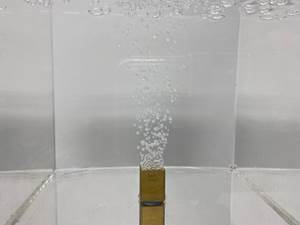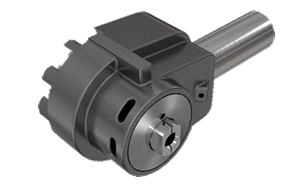Rapid Tooling Is Not the Future; It Is Today!
If a company has chosen to delay a rapid tooling initiative, it has fueled a tremendous competitive disadvantage. Continuing to do business in the ways of the past has only a single destination - failure.
If a company has chosen to delay a rapid tooling initiative, it has fueled a tremendous competitive disadvantage. Continuing to do business in the ways of the past has only a single destination - failure.
For the moldmaking and injection molding industries, the competitive pressures are monumental. Competing on price is no longer a viable option due to the low-cost solutions available from offshore companies. Competing on quality is not viable, because in today's market quality is no longer a feature that provides benefit - now it's a standard expectation and requirement.
The issue today is speed. Companies in every industry are focused on delivering product to market faster. The ability to help the customer achieve this objective results in a competitive edge. Rapid tooling positions the moldmaker and molder to meet the customer's requirements and gain a competitive advantage. Without a rapid tooling solution, many claim that a company's competitive position is precarious.
However, the necessity of a rapid tooling solution is dependent upon the definition of "rapid tooling."
Rapid Tooling Defined
At its inception, rapid tooling was the ability to generate core and cavity inserts as a product of a rapid prototyping technology. Rapid tooling was the result of an additive process driven by 3-D CAD - a process that requires little or no machining or EDMing. For some, rapid tooling continues to be described in this narrow scope.
Others, however, have embraced a description of rapid tooling that has expanded to a much broader scope. Perhaps the most important factor to this change was the use of the adjective "rapid." Since the opposite of rapid is slow, a company that cannot claim to be a rapid tooler could be perceived as a "slow" tooler. A secondary driver is the attractiveness of the phrase "rapid tooling." Inclusion of "rapid tooling" in advertising and literature attracts the attention of buyers and results in sales. Rapid tooling has become a loosely defined buzzword.
The resulting broad definition of rapid tooling has evolved to describe any method that delivers tools in substantially less time than would be expected from a historical perspective. Loosely, this translates to the delivery of a prototype tool and sample shots in three to six weeks.
Rapid Tooling - Narrow Definition
"New process delivers inserts in two weeks!" is a frequent statement in trade journals. What the provider of the advertised rapid tooling process does not state is that a two-week delivery is based on ideal circumstances such as no backlog, ideal part size, ideal part geometry and reasonable molding parameters.
When the requirements and the component's definition match the capabilities of the rapid tooling technology, magic can happen. Leadtimes can be slashed. There are powerful rapid tooling solutions available today. Of the dozens of processes, each one can claim numerous success stories where their clients have dramatically reduced price and time. Rapid tooling is a powerful solution when it is selected as the right tool for the job.
However, today's rapid tooling solutions are generally niche applications. They excel when all conditions are right and the buyer can accept the limitations of the process in order to gain a time advantage. It is this narrow breadth of application that prevents these technologies from becoming widely used and generally known.
In the near future, major advances will take place, and these advances will enable rapid tooling technologies to take hold and become standard methods in the product development and production process. With this knowledge, leading companies may not choose to employ a rapid tooling solution today, but they will keep abreast of the technologies to take advantage of the developments when the time is right.
Rapid Tooling - Broad Definition
Any company that cannot claim to be a rapid tooler, in the broad definition, must have a clear and deliberate strategic focus. Cutting time out of the process to meet and exceed customers' delivery demands is, and will continue to be, a major force in the moldmaking industry.
Just 10 years ago, a typical leadtime for cut aluminum tooling would be six to 12 weeks. Today, these leadtimes are typically four to six weeks. In the next few years, it is foreseen that leadtimes for aluminum tools could fall to two to four weeks. With this increasing speed of delivery, these traditional methods must be considered to be rapid tooling solutions.
Technology plays a role in gaining an advantage through reduced leadtimes. The growing use of 3-D CAD systems combined with efficient CAM packages makes programming faster. The ability to transmit CAD data electronically over the Internet streamlines the process. Advances in machine tools and the growing use of high-speed machining, reduce the time required to cut the tool. These technologies enable moldmakers to respond quickly. Incorporating these advances is vital to long-term success. However, technology enables time reduction, but it does not guarantee it.
Advanced technology without the people and processes to make it efficient and quick, is of no benefit. Before or in conjunction with the addition of leading-edge technologies, a successful company will work on its business and production flow. If high-speed machining is available, but the backlog in polishing is extreme, the only result is creating more work in progress faster. Without overall efficiency, the buyer may not see a reduction in the delivery time and will not consider the service to be rapid.
In today's market, the rapid tooling label can be applied to any company that has highly efficient processes, people and work flow. Being faster than the competition allows a company to rightfully claim to be a provider of rapid tooling solutions. Employing the narrowly defined rapid tooling and the latest moldmaking technologies is not a requirement, it is merely an enabler. The buyer does not care how the job gets done. They are concerned only with receiving their order quickly with the prescribed quality and value.
Conclusion
Companies that possess a narrowly defined rapid tooling solution may not be rapid. Meanwhile, an organization that machines all of its tools may have earned the right to be called a "rapid tooler." Rapid tooling is not about the process, it's about how fast results can be achieved and success is not gained solely from employing a leading-edge technology, it's the combination of tools, methods, processes and people that makes the solution rapid.
To be prepared for tomorrow, a three-step strategic plan is required:
- Work the flow to eliminate inefficiencies in the process.
- Incorporate the latest, proven technological advances.
- Be aware of the current and future capabilities of the 3-D CAD-driven, additive process labeled "rapid tooling."
Related Content
From Injection Mold Venting to Runnerless Micro Molds: MMT's Top-Viewed June Content
The MoldMaking Technology team has compiled a list of the top-viewed June content based on analytics. This month, we covered an array of topics including injection mold venting, business strategies and runnerless micro molds. Take a look at what you might have missed!
Read MoreVariable Density-Coated Tool Steel for High-Wear Molds
A mold builder can have an abundance of venting and fully dense solid areas in steel by using variable density sintering to eliminate gas trap defects in high-wear molds.
Read MoreMoldMaking Technology's Most-Viewed Content 2022: Products
MMT shares the five top-viewed technologies, equipment and services of 2022 in each Engineer, Build, Maintain and Manage tenet based on Google Analytics.
Read More3D Printing Enables Better Coolant Delivery in Milling Operations
Just like 3D printing enabled conformal cooling channels in molds, additive manufacturing is now being used to optimize coolant delivery in cutting tools.
Read MoreRead Next
How to Use Strategic Planning Tools, Data to Manage the Human Side of Business
Q&A with Marion Wells, MMT EAB member and founder of Human Asset Management.
Read MoreHow to Use Continuing Education to Remain Competitive in Moldmaking
Continued training helps moldmakers make tooling decisions and properly use the latest cutting tool to efficiently machine high-quality molds.
Read More





_300x250 1.png;maxWidth=300;quality=90)







.jpg;maxWidth=300;quality=90)












